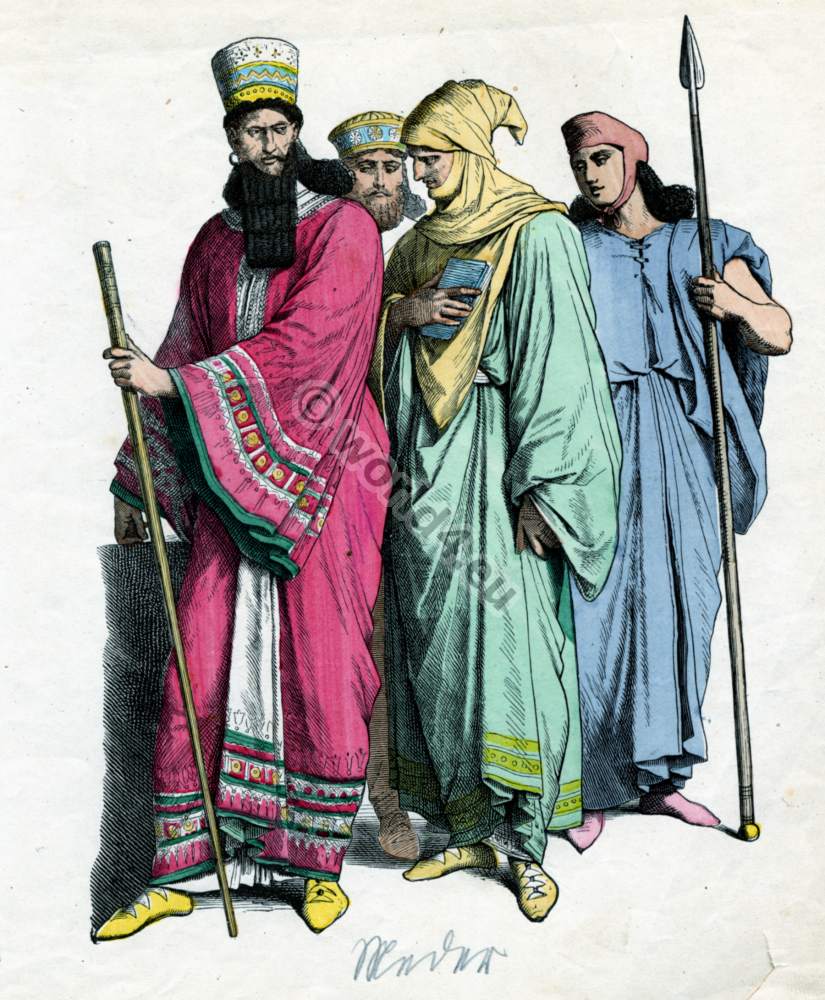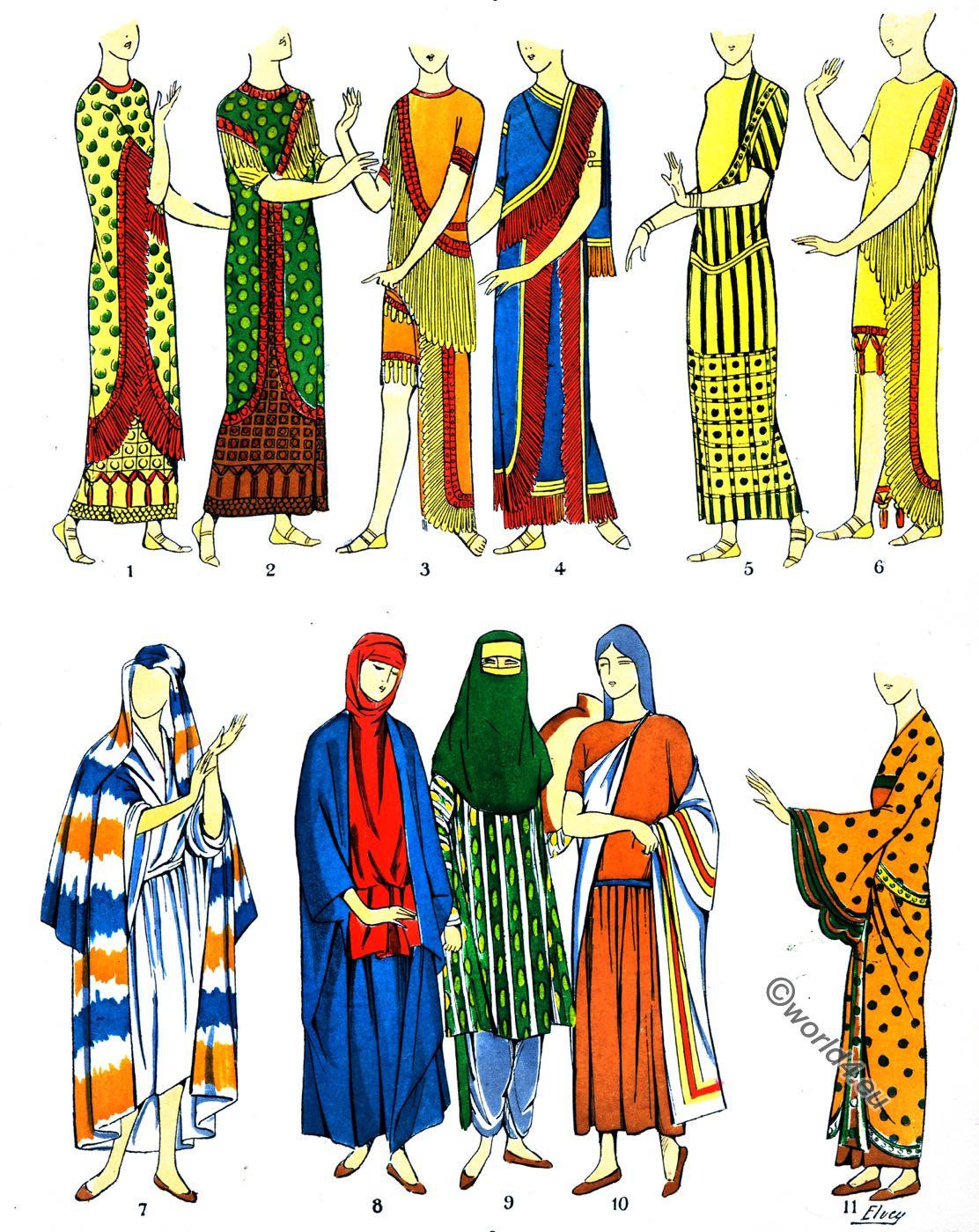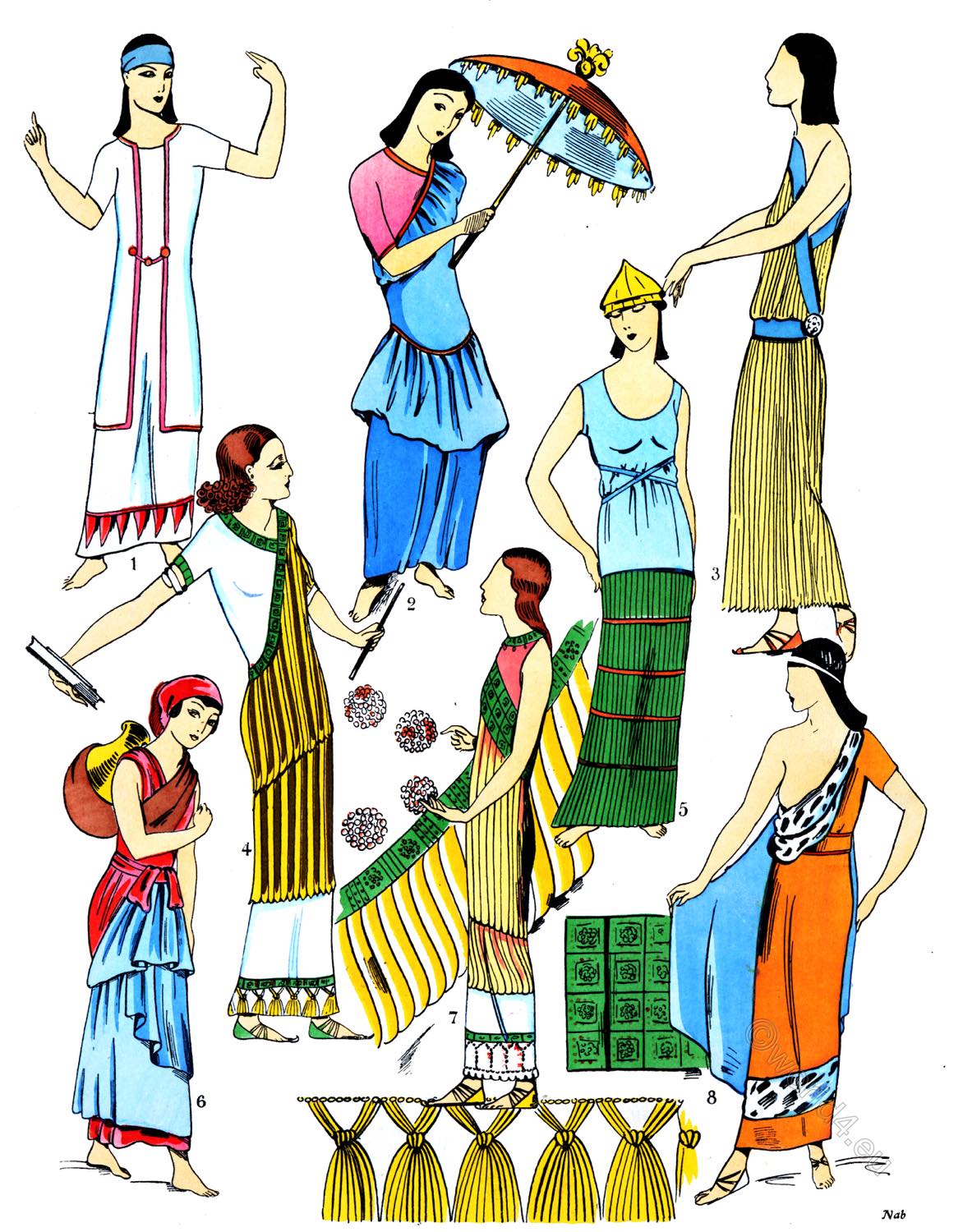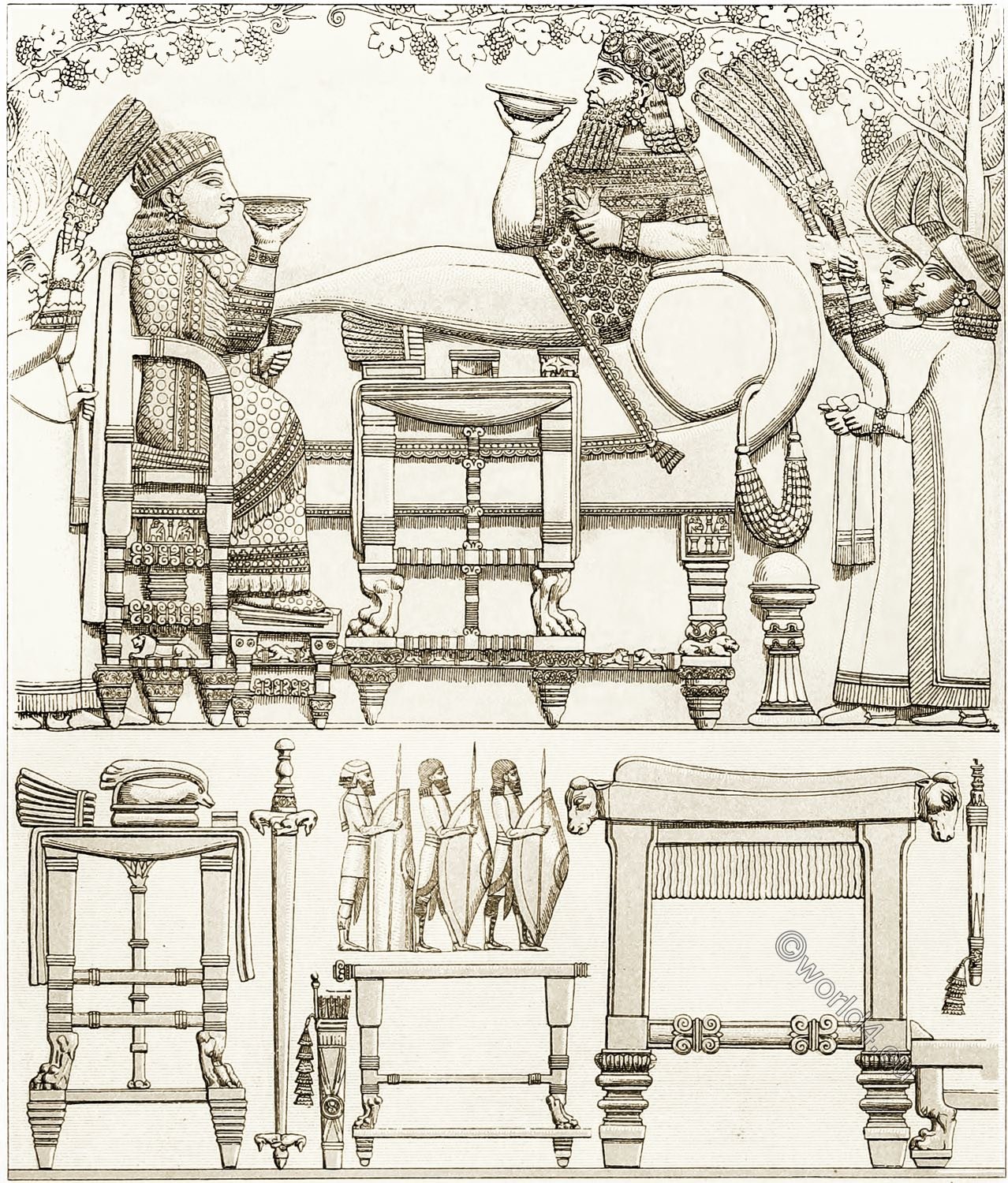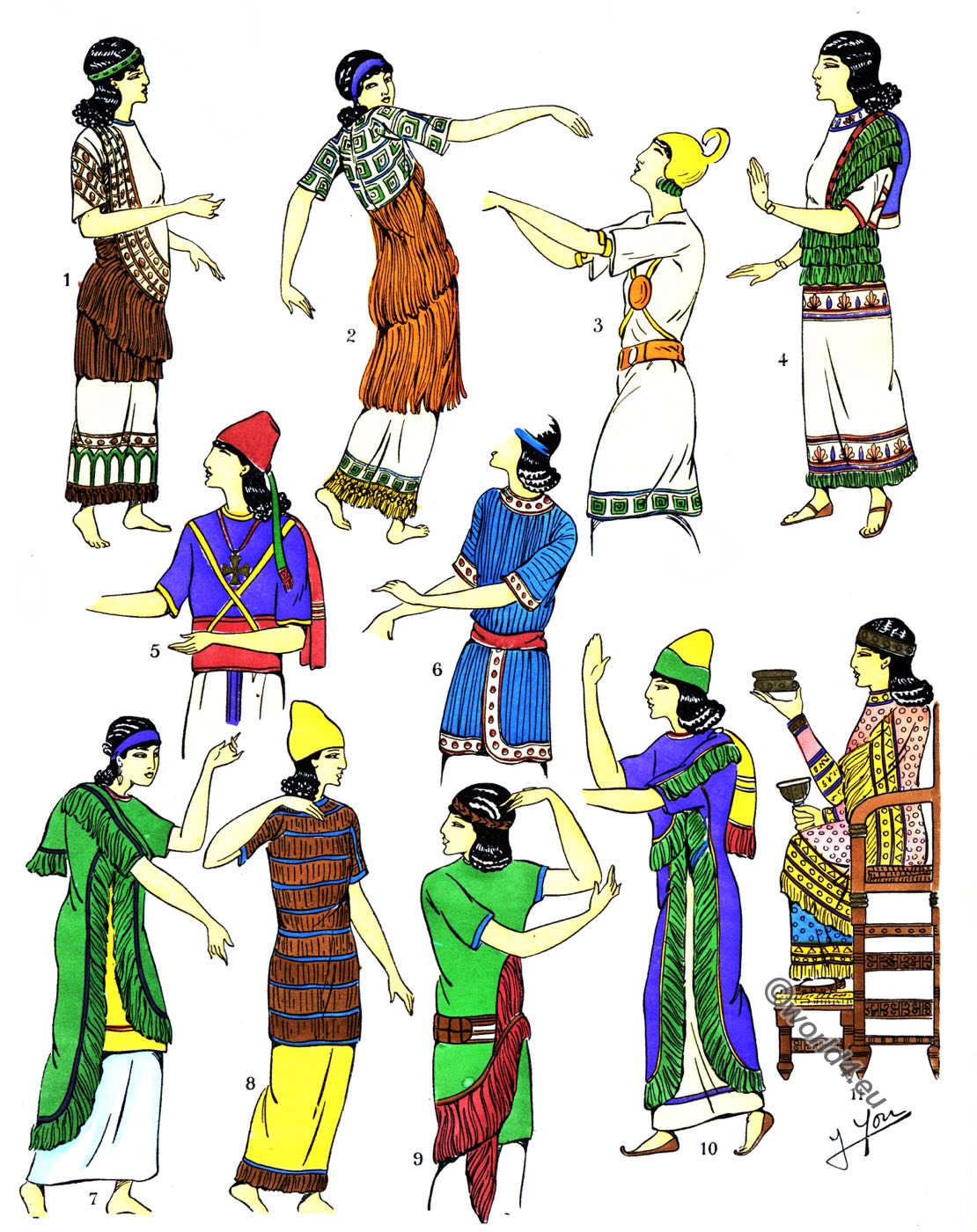
ASSYRIAN ART. EXAMPLES OF POLYCHROMATIC DECORATION.
Two distinct periods may be noted in Assyrian art: the first, that of the foundation of Babylon by the Nabateans, on an alluvial soil destitute of stone quarries a period characterized by the exclusive use of brick, and in which architecture was confined within very narrow limits; and a second period, that of the foundation of Nineveh by the Scythians, the conquerors of primitive Babylon, in a region where basalt and numerous stone quarries rendered possible a monumental architecture quite unknown to the Babylonians.
It is to this Ninevite period, which might also be called the Scytho-Assyrian, that the majority of the remains collected in the museums of London and Paris belong; as also do the various specimens given in our plate.

NINEVEH. PALACE OF KHORSABAD.
No.1. Painted sculptures, after Layard,
Nos. 2, 3, 4. Painted sculptures, after Victor Place.
No. 5. Bricks inlaid in colours, after Layard.
Nos. 6 to 10. Enamelled bricks, after Victor Place.
Nos. 11 to 18. Various specimens, after Layard.
Nos. 19, 20. Paintings, after Victor Place.
Nos. 21 to 23. Restorations, after Botta.
PERSEPOLIS.
Nos. 24 to 33. – Restorations, after M. C. Texier (l’Armenie, la Perse et la Mésopotamie, 2 vols. folio; Firmin Didot).
Source: Polychromatic ornament by Auguste Racinet. London, H. Sotheran and Co., 1877.
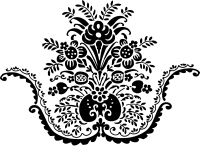
Discover more from World4 Costume Culture History
Subscribe to get the latest posts sent to your email.

